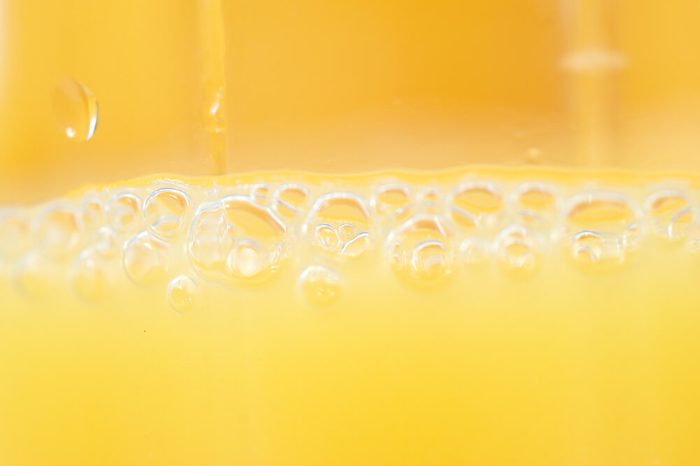
Citrus drinks
“The label looks more like a complicated science experiment than a beverage,” says Lindsey Pine MS, RDN, of one citrus drink in particular. “These drinks have at most 10 percent juice, according to their ingredient lists. Not only do they have high fructose corn syrup, but they also have three different sources of artificial sweeteners in addition to artificial colours.” The grossest part? There’s oil in at least one brand of this juice! Water is obviously the best alternative, but if you need a fruit fix, Pine suggests diluting 100 percent fruit juice with water. Juice is sometimes thought of as “healthier” than soda. But looks can be deceiving.
(Related: 9 Things That Happen to Your Body When You Get a Full 8 Glasses of Water)
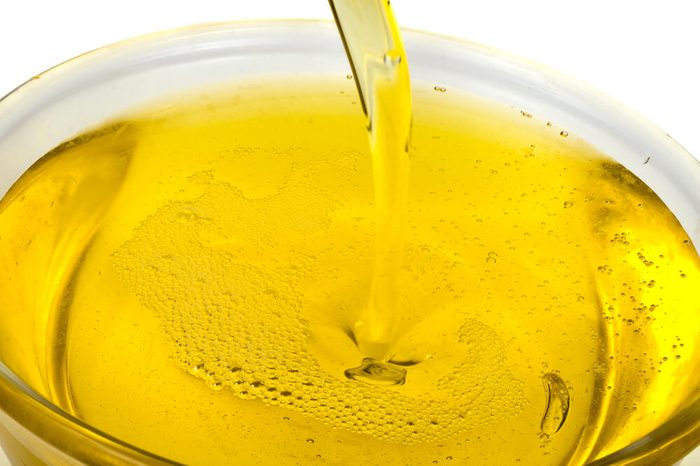
Vegetable oil
You usually get what you pay for, and that’s exactly the case with this low-budget oils. “Cheap refined vegetable oils are known for their high amounts of omega-6 fatty acid content, and while we absolutely need omega-6’s to survive, our Western diets get way too much of them, possibly leading to systemic inflammation, which can lead to chronic disease,” explains Pine. “Further, the majority are made from genetically modified plants.” Instead, she suggests you opt for Thrive Algae Oil, which is composed of 90 percent monounsaturated fat (omega-9, the heat-stable “good” fat), has a neutral taste, is sustainably produced, and doesn’t contain any GMOs.
(Related: The 10 Healthiest Cooking Oils, According to Food Experts)
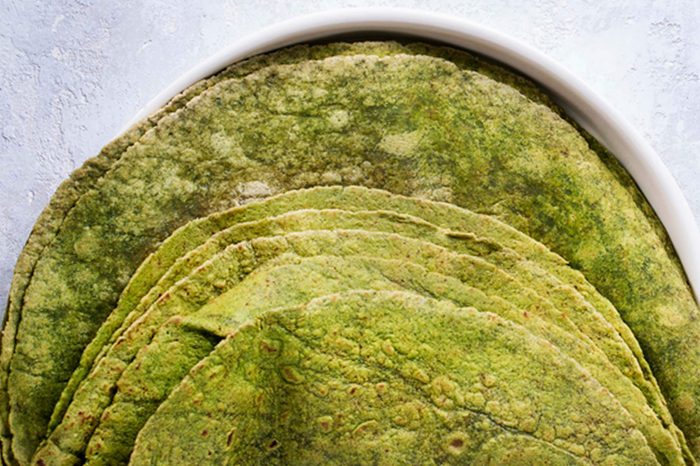
Veggie wraps
“A basic tortilla takes about four ingredients to construct—flour, water, oil, and salt—but some brands, like one that claims to contain spinach, uses no fewer than 30 ingredients to construct these wraps, and spinach falls under the ‘2 percent or less’ portion of the ingredients statement,” says Janine Whiteson, RD. That’s not a joke! Spinach wraps with less than 2 percent spinach… So what is this wrap made of? “A lot of enriched flour and vegetable shortening, neither of which makes for a healthy sandwich. Consuming one serving of these wraps is the caloric equivalent of consuming four Pizza Hut Traditional Buffalo Wings!” Instead, opt for whole wheat tortillas and make our Steak Salad Tacos.
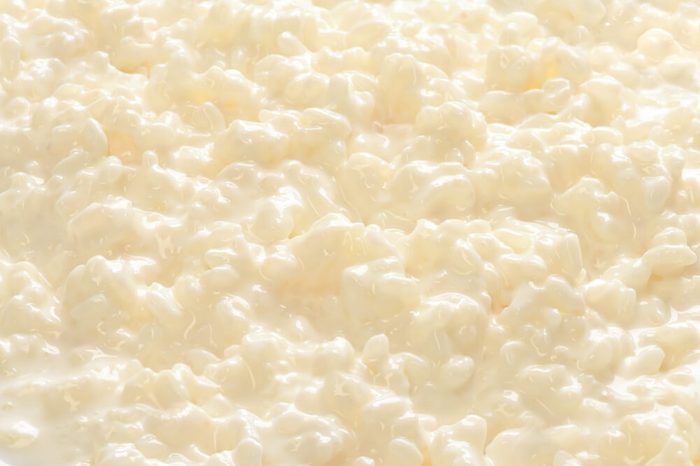
Vegetable rice blends
When it comes to rice mixes that tout healthful ingredients, like broccoli, you can bet that there’s not much of the green stuff in there. “Neither cheese nor broccoli ranks higher than partially hydrogenated palm oil one popular rice mix,” notes Whiteson. “This is a salt mine—by eating one small serving of this, you will have consumed a day’s worth of sodium. These products are extremely high in artery-clogging saturated fat! And really…. broccoli? I think there might be broccoli dust somewhere in there—but nowhere near enough to deem this at all healthy.” Stay away! We say choose arborio rice and make White Truffle Risotto with Cauliflower.
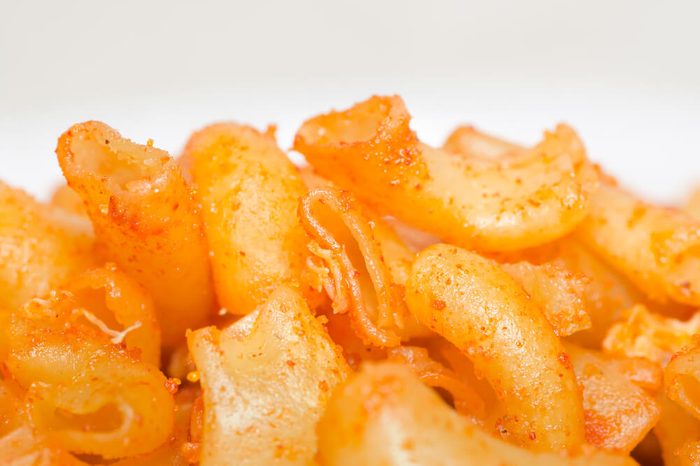
Boxed Mac and Cheese
This kid-friendly staple is a nutritional disaster. Whiteson points out that one box of a top-selling brand has more than two days’ worth of trans fats per serving and more than a day’s worth of sodium. “It also has virtually no fibre and is made with additives and chemicals that have been banned in countries around the world. While it may be a favorite for children, especially in the United States, this dinner option is probably one of the worst supermarket buys with no nutritional value.” (Instead, try out Butternut Squash Mac & Cheese.
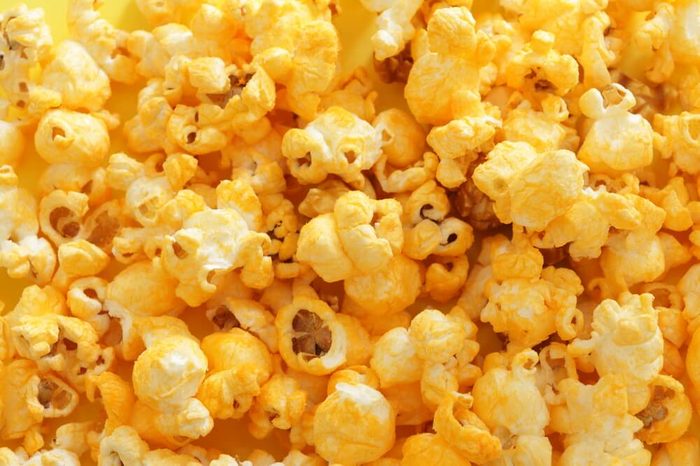
Cheese-flavoured popcorn
Readymade flavoured popcorn—smart? “Hardly,” says Whiteson. “One popular brand earns a heavy load of fat from oils, cheese, and buttermilk. It’s also loaded with salt—a day’s worth in just a few servings. What an adulteration to the simple, high-fibre popcorn that can actually be worked into a healthy diet! Not smart at all!” Flavoured popcorn joins the list of surprisingly unhealthy foods to avoid. But, plain popcorn makes a healthy snack.
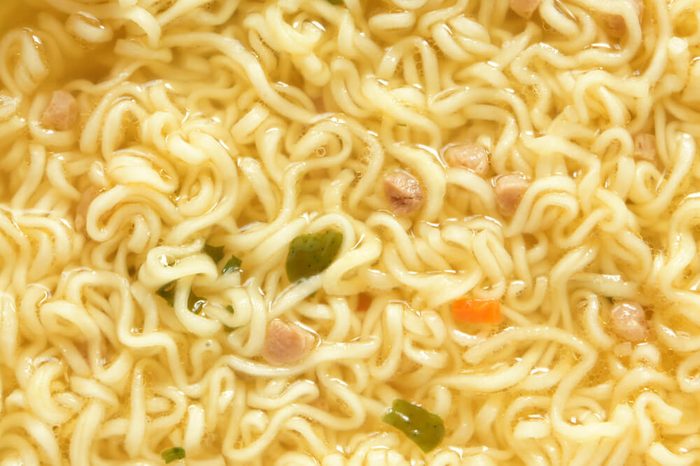
Noodle soup kits
“Noodle soup kits are among the cheapest meal solutions found in the grocery store—which is why they are known as a college student staple. Still, they are one of the worst excuses for a meal in the entire supermarket,” says Whiteson. These popular dehydrated noodles not only bring zero nutritional value to the table, but they also contain a food additive called tertiary-butyl hydroquinone (TBHQ), a preservative that is a petroleum-industry byproduct (yes, it’s as gross as it sounds). “They’re also incredibly high in sodium, calories, and saturated fat. The containers packaging these noodles aren’t helping much either. This little brick that magically melts into noodles is a big artery clogger!”
(Related: Healthy Store-Bought Snacks to Keep On-Hand When Working From Home)
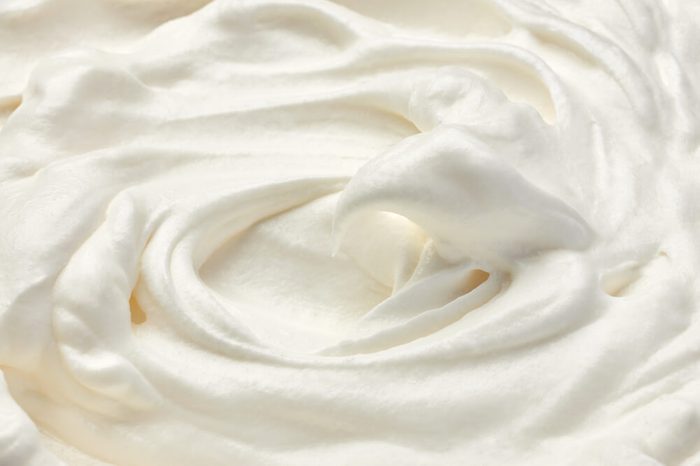
Vanilla frosting
Have you ever looked at frosting nutrition labels? “They look more like a science experiment than a food,” says Pine. “They’re packed with multiple types of sugar, artificial colours, and ingredients that allow for a very long shelf life. One of the most popular brands even uses partially hydrogenated oil, which is code for trans fat, the only type of fat that you want to avoid at all costs. Trans fat increases bad cholesterol, lowers the good kind of cholesterol, and creates bodily inflammation which could lead to heart disease.” When you want to treat yourself, the better option, she says, is to make your own buttercream frosting using real ingredients like butter (you know it’s bad when the better alternative is butter!).
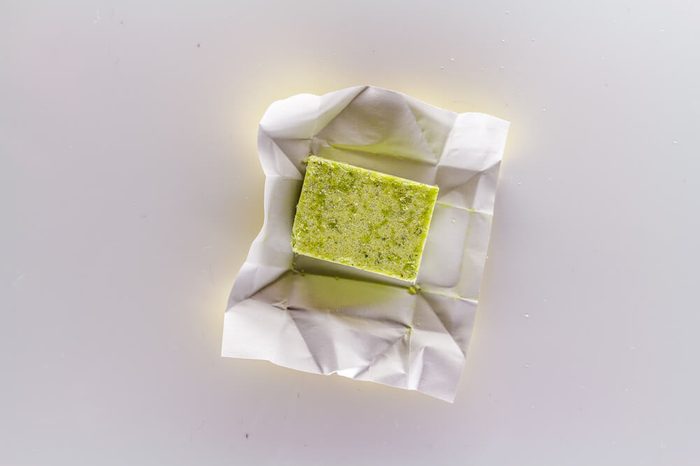
Bouillon cubes
These ones are sneaky! “Adding bouillon cubes seems like a great shortcut to enhance the flavour of homemade soups, but they’re nothing more than sugar, fat, hydrolyzed soy protein, salt, and often MSG,” cautions Pine. “One way to know that you’re buying a bouillon or soup base, which is a better choice is to look at the ingredient list. The first ingredient should be actual chicken, beef, seafood, or veggies. Or, skip the bouillon and use reduced-sodium chicken broth.”
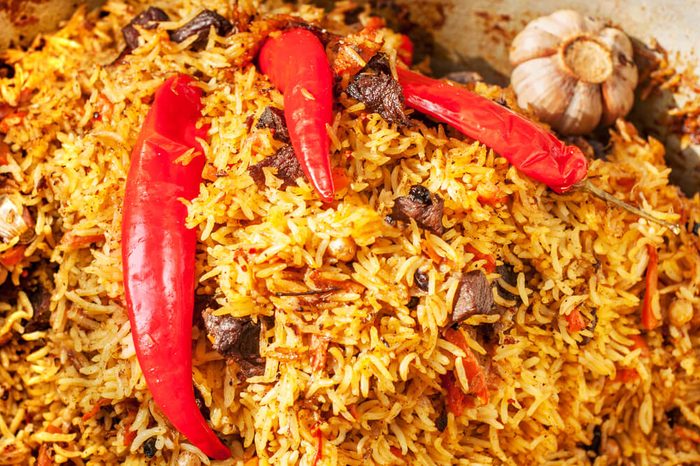
Meat-flavoured rice
“Boxed rice mixes are super tasty because food manufacturers add tons of salt and flavour enhancers,” explains Pine. “Make your own healthy pilaf with garlic, onion, and rice. Choose brown, red, or black rice to make it a whole-grain dish for added fibre and nutrients.”
(Related: 5 Types of Rice: Which Is the Healthiest?)
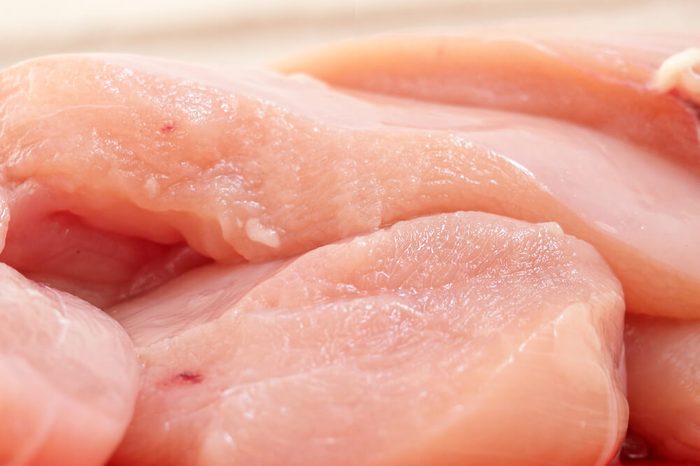
Pre-grilled chicken breasts
In short, there’s nothing even remotely redeeming here. “Look at the package when making your grocery store decisions,” says Whiteson. “Pre-cooked chicken is often loaded with lots of bad stuff to make it have a longer shelf life—all the while reducing your life! All that added sodium will make you feel bloated!” Instead, try this easy Dutch-oven chicken breast recipe.
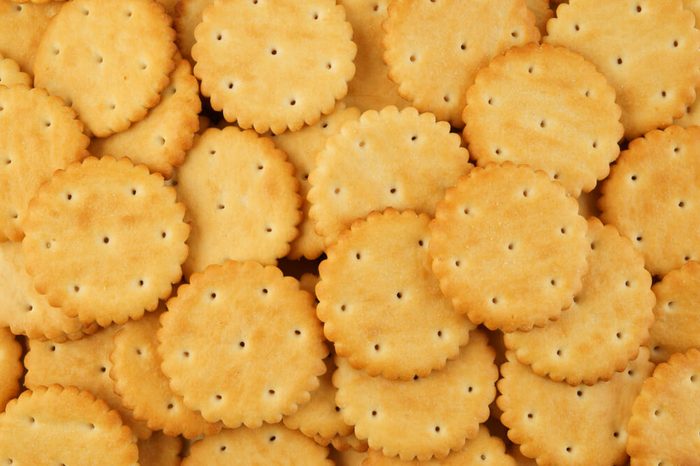
Lunch kits for kids
If you’re cringing thinking about how many kiddie lunch kits you’ve eaten in your lifetime, you’re not alone! It’s disheartening that products marketed at children and busy moms can be so insanely unhealthy. “These processed snack packs are filled with sodium and saturated fat, and provide little to no fibre,” says Whiteson. “In fact, many versions of these processed snack products can set you back 600mg of sodium—that’s about 30 percent of your recommended daily amount! Your children are probably begging for these snack packs that their friends have at the lunch table. No matter how cheap and convenient they may seem, don’t give in. They are not worth it!”
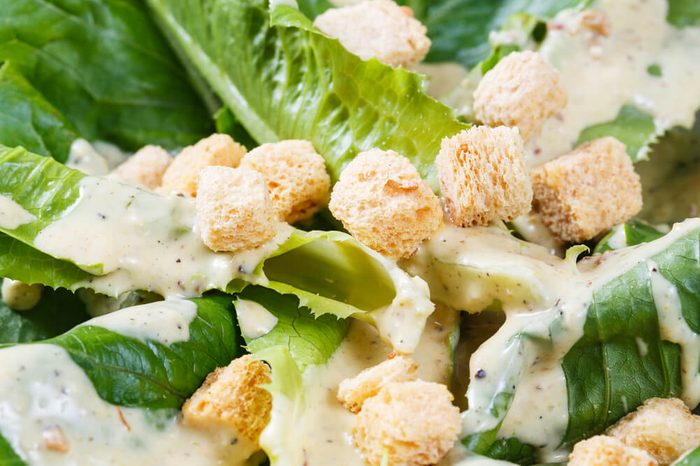
Ranch salad dressing
Commercial salad dressings can be packed with sodium, sugar, and saturated fat, but the real issue is serving size. “Most dressings use one or two tablespoons, smaller than the usual drizzle, as their serving size,” says Whiteson. So when you glop it on, the amounts of those bad ingredients add up big-time. “These dressings can easily add up to an extra 300 calories per day if not more!” she says. Instead, Whiteson recommends topping greens with avocado, poached eggs, or marinated veggies and skipping the dressing altogether. “They’ll contribute heart-healthy fats without the additives and bloat-inducing salt,” she says.
(Related: 3 Healthy Salad Dressing Recipes This Nutritionist Swears By)
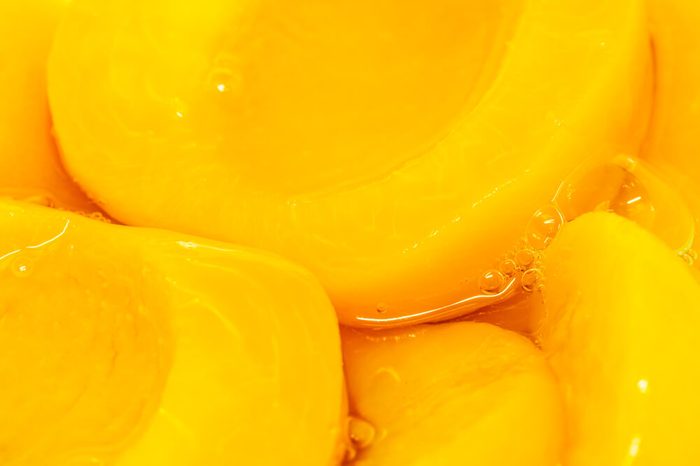
Sliced peaches in heavy syrup
There’s no excuse for not eating real fruit—it’s as convenient as it gets! “Little containers of peaches or pears are a nice convenience item to pack in a lunch, but not when they’re drenched in heavy syrup, which is loaded with added, unnecessary sugar,” says Pine. “The ‘lite’ version still has added sugar, and the ‘no sugar added’ variety is usually code for added artificial sweeteners. Emerging research is showing that artificial sweeteners may be harmful to the gut microbiome. If plain fresh or frozen fruits aren’t an option, be sure to choose canned fruit packed in 100 percent juice,” Pine says.
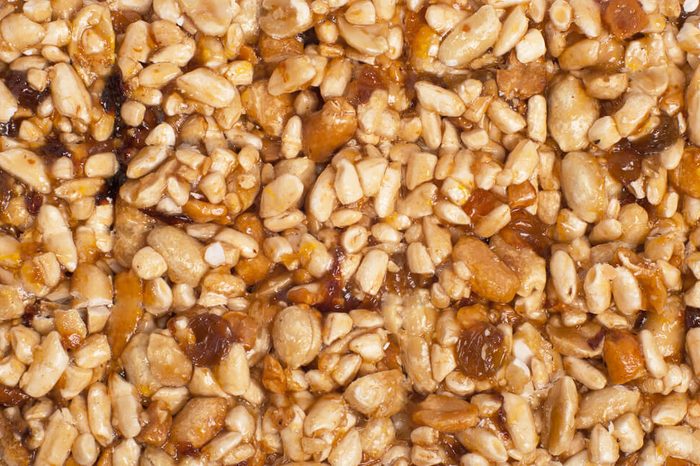
Cereal bars
“With a whopping 17g of sugar, there isn’t anything healthy about cereal bars, even the ones that claim to be ‘made with real milk,'” notes Pine. “As a high-carb snack packed with many sources of simple sugars, including high fructose corn syrup, you’ll probably be hungry quickly after eating one. Just because they added these items into the bar doesn’t mean they took out the unhealthier stuff!” Eating out and on the run? Try our roundup of the best homemade energy bites, balls, and bars.
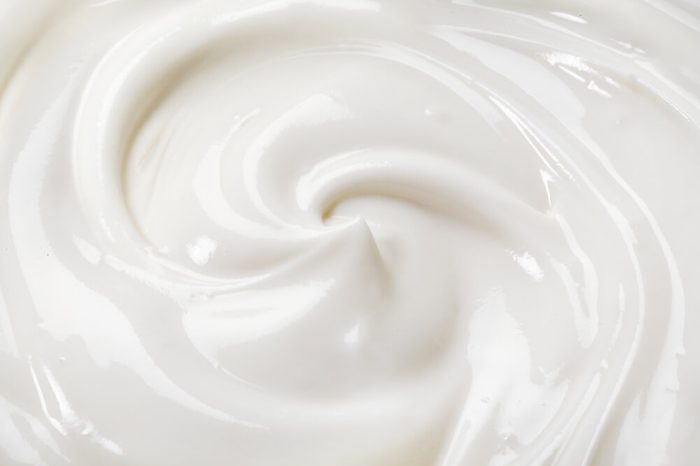
Frozen whipped topping
That frozen white stuff isn’t as harmless as it looks—especially the lower-fat versions. “Just because something seems to have less fat than the real thing doesn’t make it the better choice,” says Pine. “Whipped toppings are mixtures of hydrogenated vegetable oils, corn syrup, high fructose corn syrup, and artificial flavours. Just eat real whipped cream to top your treat. Homemade whipped cream is super easy to make and you can control the level of sweetness.”
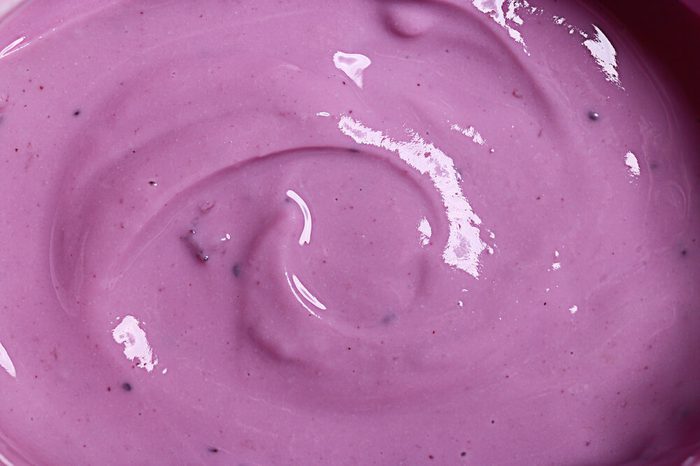
Probiotic yogurts
Don’t be fooled by the probiotic branding. “One leading brand of probiotic yogurt has a whopping 19g of sugar per 4.4-ounce container of the blueberry flavour,” says Whiteson. “That’s as much sugar as a Twinkie, in a smaller-than-average serving size! What really creates a sugar rush is what they’re including in commercial yogurts these days. Fruit, especially the syrupy kind mixed into store-bought yogurts, is a common culprit. Candied nuts or sweetened granola toppings quickly bring the yogurt well beyond the sugar content of an entire doughnut.” Instead opt for a high protein, high calcium, low sugar, lowfat option like Icelandic Provisions Skyr, or Greek yogurt, to keep both muscles and bones healthy and strong.
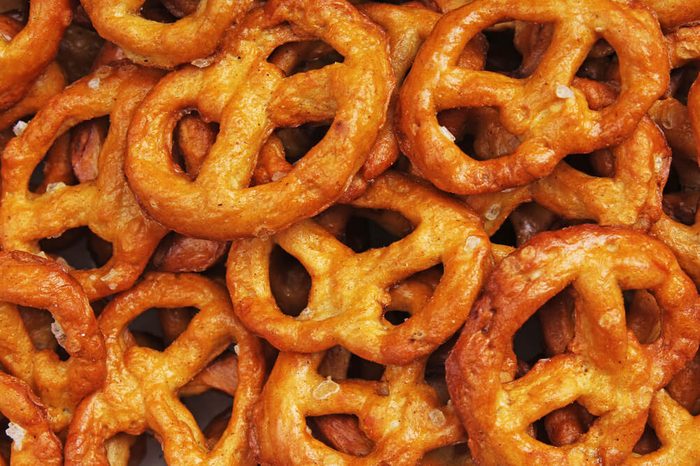
Gluten-free pretzels
Unless you’re gluten-intolerant, there’s no good reason to buy gluten-free pretzels. “Gluten-free pretzels have 25 percent of a day’s worth of sodium in only a small handful of pretzels,” says Whiteson. “They contain no fibre—which is a huge issue with gluten-free diets—and plenty of white corn and potato flour and artery-clogging palm oil.” She also notes that it’s important to watch out for gluten-free products in general as they’re often loaded with sugar, salt, and saturated fat to improve flavour. “Choose something with 100 percent whole grain as the first ingredient if you can.”
(Related: 20 Facts to Know About Gluten-Free Diets, According to People With Celiac Disease)
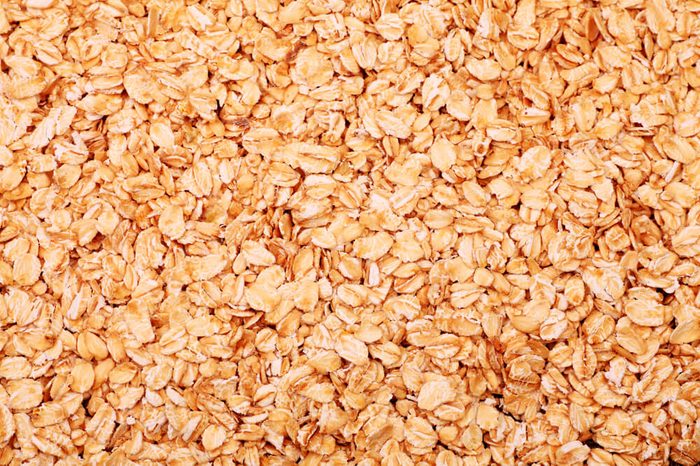
Flavoured instant oatmeal
“It’s such a shame that a super healthy and delicious food like oatmeal gets an unhealthy makeover with a deluge of sugary flavours,” says Pine. “Even the leading brands contain multiple sources of sugar, artificial colours and flavours, and even partially hydrogenated oil, which means trans fat.” If you want a healthy breakfast or snack on the go that’s packed with fibre, instant oatmeal, she says, can be a good choice, but stick with the plain kind and add your own toppings such as fruit, sliced almonds, and a touch of honey. To add bulk and flavour, you can also top it with COYO, an allergy-friendly coconut-based yogurt alternative with no added sugar, fillers, or preservatives.
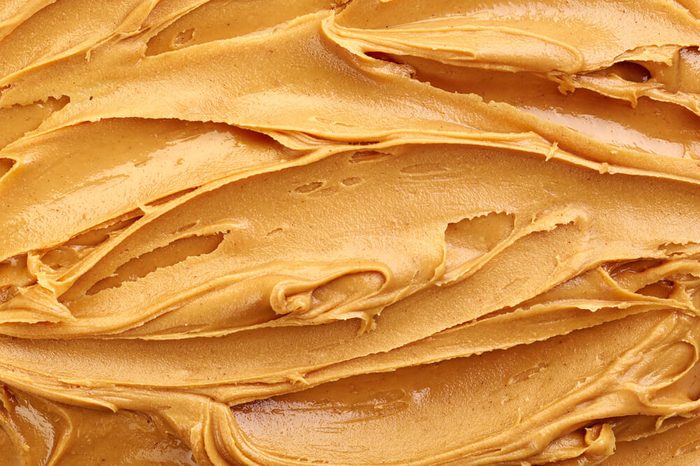
Reduced-fat peanut butter
Don’t be fooled by what seems like a healthier option. “Reduced-fat peanut butter may save you a few grams of fat, but the multiple types of added sugar and unnecessary fillers make it a very poor choice,” Pine says. “The monounsaturated fat found naturally in peanut butter is actually very good for you, so choose real, natural style peanut butter, such as Laura Scudders, instead of the laboratory concoction.”
(Related: Almond Butter vs. Peanut Butter: Which is Healthier?)
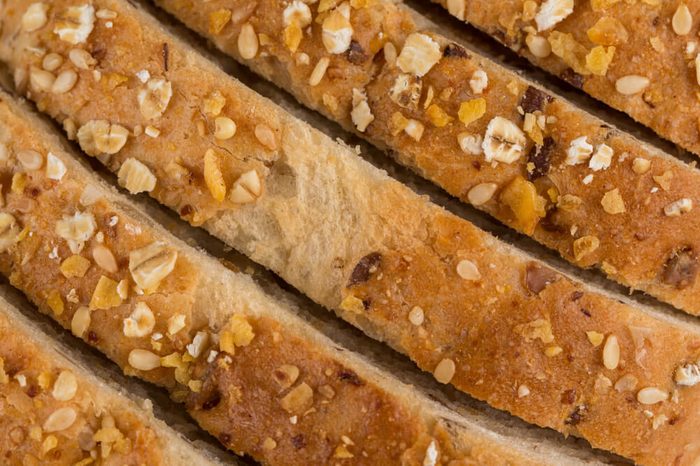
Wheat bread
“Buying certain brands of ‘wheat’ bread is a misnomer, as many times the wheat comes from enriched flour and not whole wheat,” says physician nutrition specialist, Adrienne Youdim, MD, FACP. “Whole wheat contains the whole kernel including the fibre and other nutrients, whereas enriched flour has nutrients stripped when processed as flour, and only some of the nutrients are replaced in the enrichment process.” To make sure you’re buying true whole wheat bread, check that “whole wheat” is the first ingredient listed on the nutrition label.
(Related: Is Chickpea Bread Healthy? The Nutrition Facts About This Grain-Free Bread)
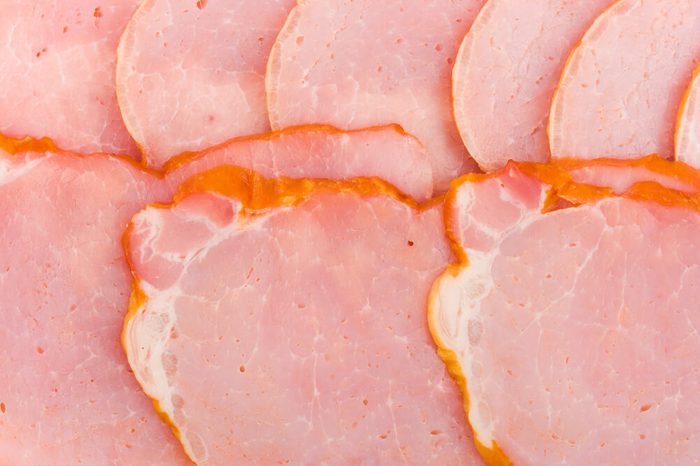
Packaged deli meats
“Cold cuts like honeyed ham are highly processed meats with many additives including sodium, artificial additives, and nitrates,” says Dr. Youdim. “The long-term effects of ingesting these additives can lead to high blood pressure, digestive issues, and even colon cancer.”
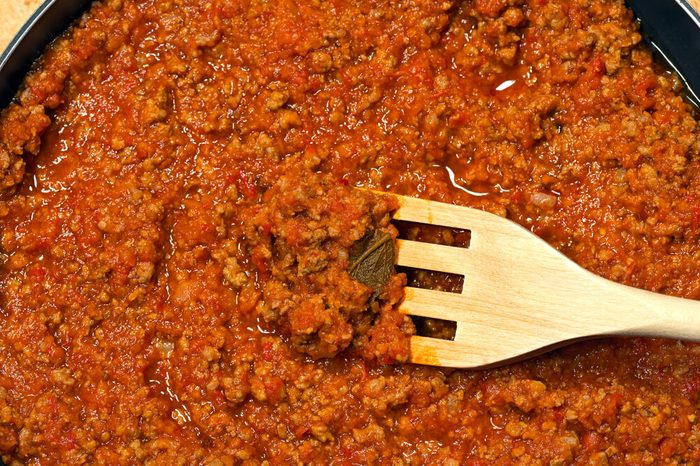
Jarred tomato sauce
Just one serving of a popular tomato sauce brand has 12g of sugar and 1/5 of your sodium cap for the day. Always read labels. It’s near impossible to find bottled pasta sauce that’s free from sugar and sodium but, at the very least, look for a low-sugar option made only with ingredients you recognize. Try our simple slow cooker tomato sauce.
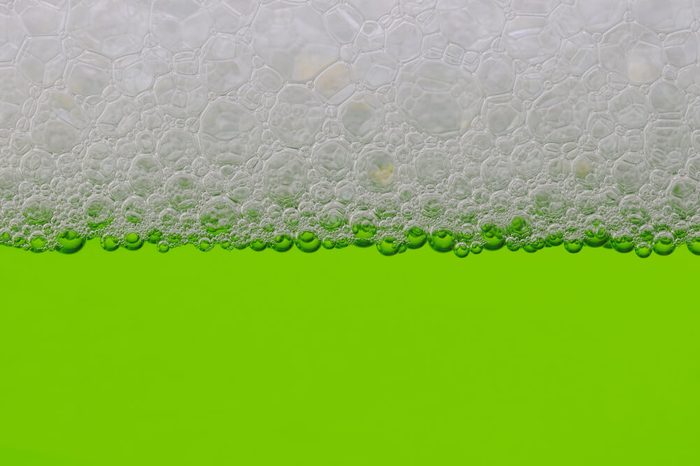
Bottled green tea
“You may see trading your can of soda for a bottled tea as a healthy swap, but often bottled teas are high in sugar and even fructose corn syrup,” says Dr. Youdim. “Bottled green tea is essentially like drinking that can of soda you just gave up. I suggest making your own green tea and putting it in a gallon-sized bottle to keep in the fridge.”
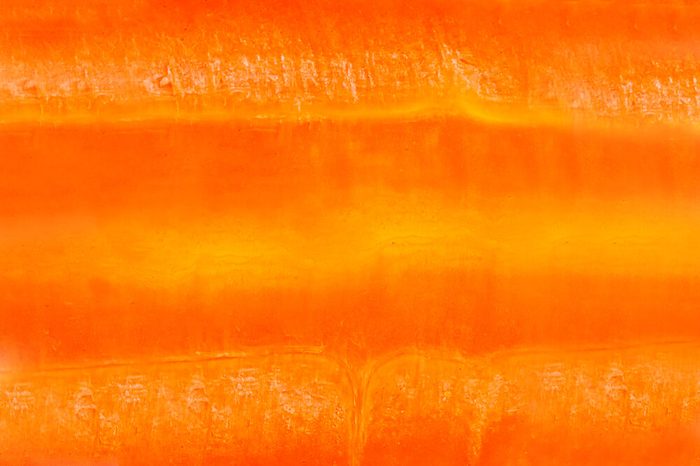
Veggie snacks
“This is one of the best examples of deceptive packaging in the grocery store,” says Elizabeth Somer, RD, author of Eat Your Way to Happiness. The first two ingredients in a leading brand of veggie snacks are potato starch and potato flour, which are glorified potato chips. “While a serving of vegetables supplies 19 to 40 calories and virtually no sodium, a full serving of these snacks will cost you 130 calories and 210mg of sodium.”
(Related: 11 Healthy Late-Night Snacks Nutritionists Actually Recommend)
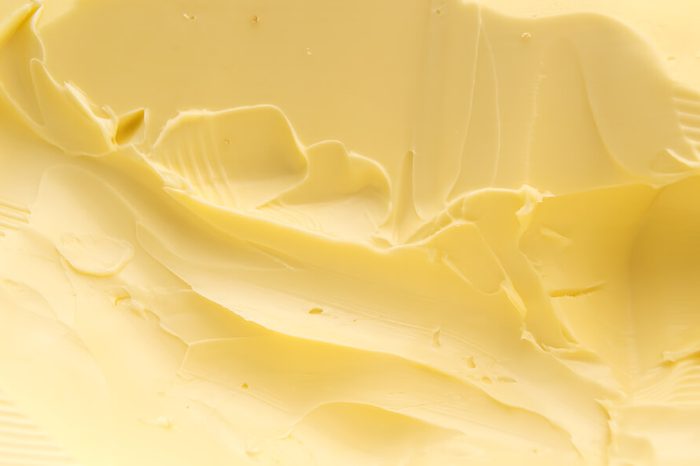
Margarine
Butter isn’t great for your diet, but margarine is the absolute worst. “Margarine is high in trans fat, which has been shown to lower ‘good’ HDL cholesterol and raise ‘bad’ LDL (and total) cholesterol,” says Paul Salter RD, MS. Better options would be unsalted plain butter, olive oil, or ghee, which is clarified butter.
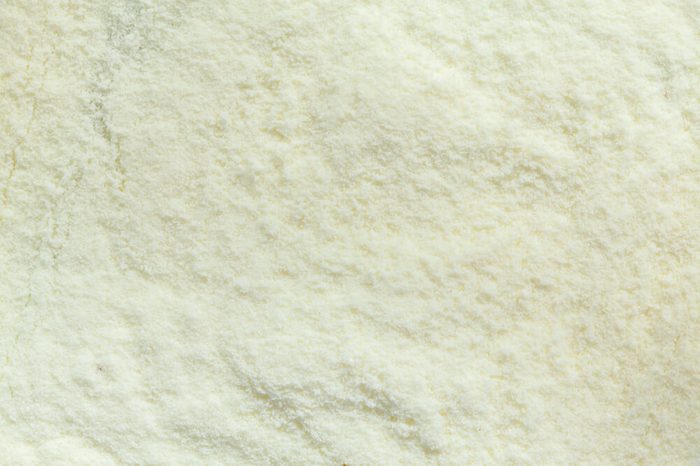
Powdered coffee creamer
“Powdered non-dairy contains a hodge-podge of trans fats, added sugars, and a plethora of artificial flavours, colourings, and more!” Salter says. Instead, opt for unsweetened almond milk, coconut milk, or Oatly, an oat-based milk. Learn more about other non-dairy milks available.
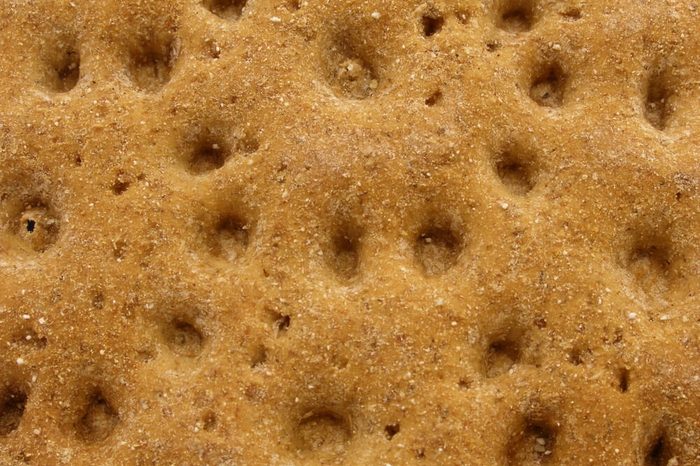
Wheat crackers
“The deceptive word here is wheat,” says Somer. “In this case, it just means that these crackers are made with refined wheat flour, the first ingredient listed. Five crackers pack almost a teaspoon of fat, 3.5g, too. Some brands, such as Kashi, make some wonderful, high-fibre wholesome cereals, but other products in the line, such as some of their crackers, have more white flour than whole. Always read the label and assume nothing.”
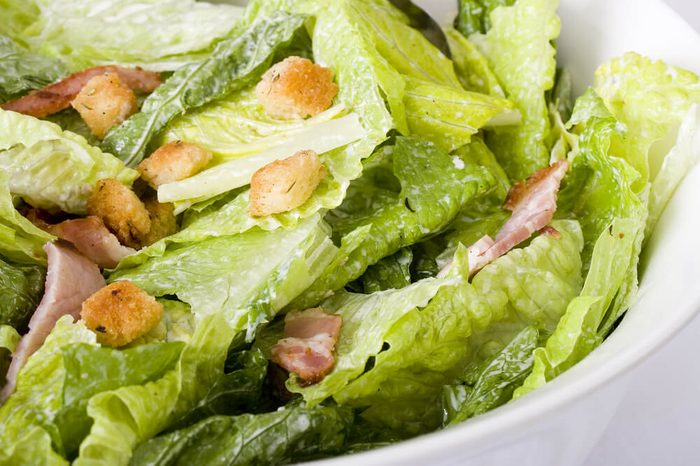
Caesar salad kit
“Many premade salad kits are fat, salt, and calorie landmines,” says Somer. “One leading brand, for example, says that there are three servings in a bag. Each little serving (1.5 cups) is 170 calories and 15g of fat! Use the entire salad dressing pouch and croutons on your salad, and you’re consuming more calories than you’d get in a Quarter Pounder with Cheese.”
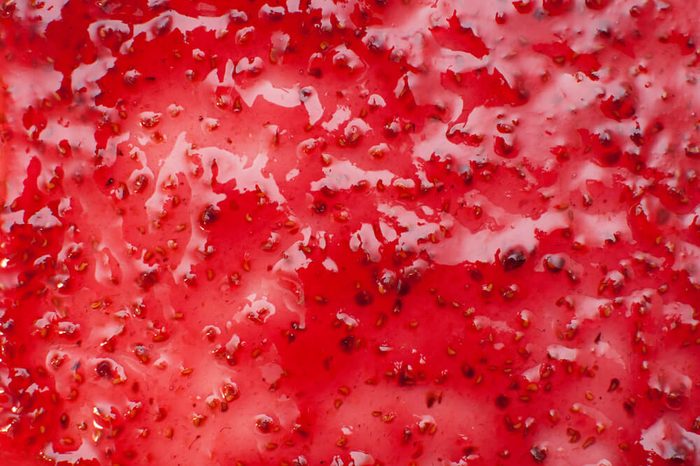
Seedless jam
“All-Fruit Jam and Regular Jam are the same, and some all-fruit jams even have more calories,” says Somer. “Both list whole fruit as the first ingredient—the only difference is that regular jam.
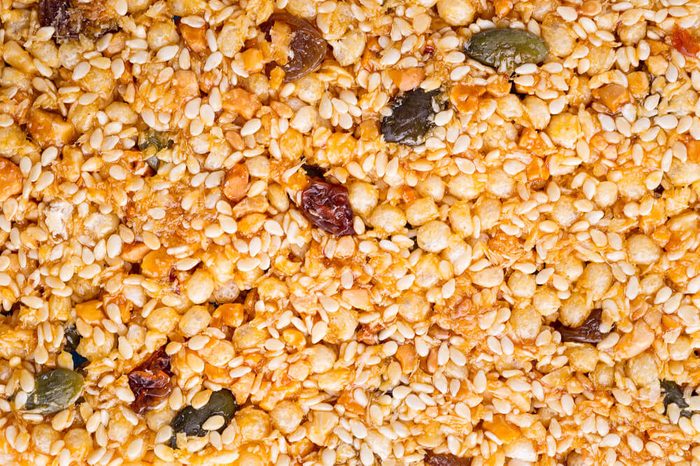
100-calorie bars
“Even though they’re only 100 calories, they’re not healthy—the main ingredients are enriched flour and a bunch of different sugar varieties,” says Hillary Lewis, founder of Lumi. “These ingredients will only cause your body to crave more sugar.” Be wary of anything not made with real, wholesome food, she adds. Bars like these may be low in calories, but they’re high in ingredients that grow the waistline.
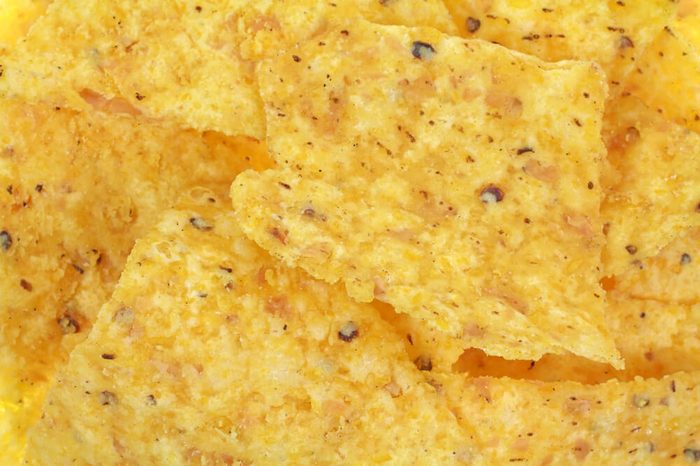
Lentil chips
“Just because a product is ‘gluten-free,’ ‘non-GMO,’ and a ‘great source of fibre’ doesn’t actually mean it is good for you,” says Neda Varbanova, certified culinary nutritionist, holistic health coach, and recipe creator. “Lentil chips sound healthy but contain potassium chloride, canola oil, and calcium chloride—all ingredients that should make you think twice about picking it up.”
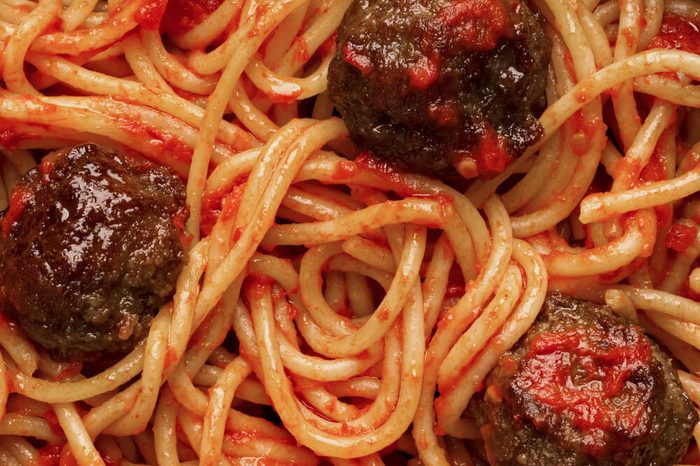
Canned spaghetti and meatballs
Varbanova underscores that the worst part about canned spaghetti and meatballs is that they directly target parents and their kids with their packaging. “The colours are fun and it has a bright green label saying ‘healthy kids entree,’ but there is nothing healthy about this concoction. The ingredients for a simple spaghetti and meatballs dish contains almost 40 ingredients, making it more of a science project than a meal. Ingredients to be wary of: mechanically separated chicken (aka pink slime), high fructose corn syrup, dextrose, and enzyme-modified butter.” Instead, try our Spaghetti with Yellow Zucchini, Asparagus and Fresh Herbs.
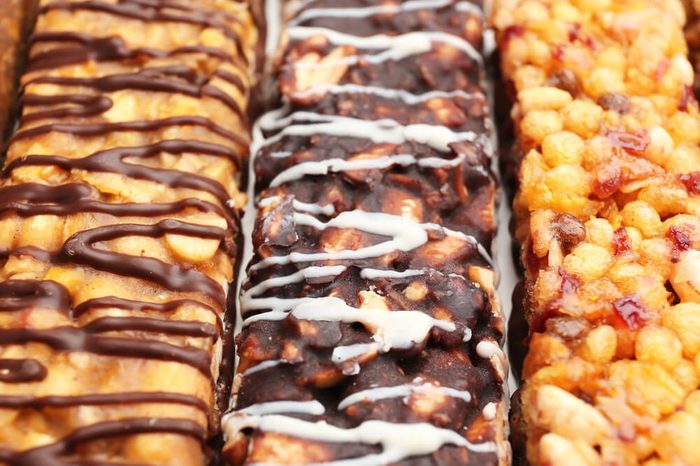
Low-carb bars
“Low carb bars would appear to be a perfect snack full of fibre and protein,” says Varbanova. “But if you take a closer look at the ingredient lists, you will notice that some contain erythritol, a sugar alcohol that has been linked to stomach pains, diarrhea, and headaches, especially in people who have IBS. Plus, the corn fibre in these bars is most likely GMO.”
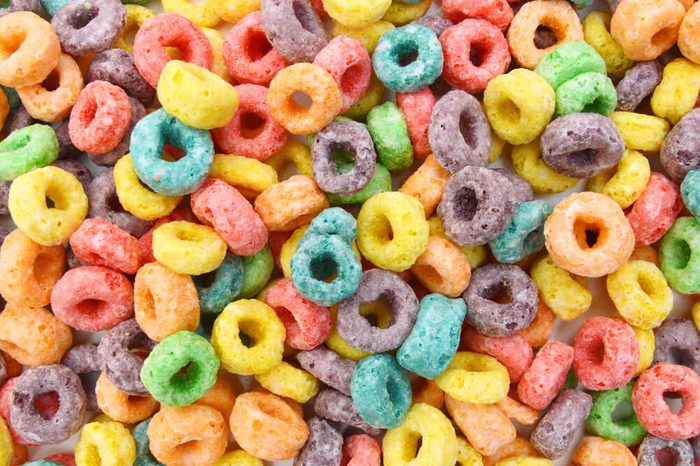
Fruit-flavoured cereal
Calling these products fruit anything is laughable. “These cereals claim to pack in ‘natural fruit flavours,'” but there is nothing natural about this product that is marketed to children,” says Varbanova. “One popular brand contains de-germinated yellow corn flour, modified food starch, hydrogenated vegetable oil, red #40, blue 1, yellow 6, and BHT for freshness. Blue 1 is an artificial food dye that is sourced from petroleum. This dye is linked to hyperactivity and an increased risk of kidney tumors.”
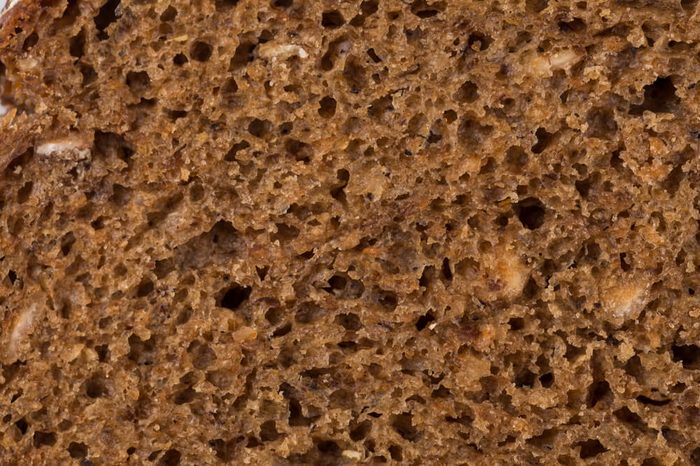
Light wheat bread
“Light wheat bread looks like a delicious whole-wheat product that contains only 45 calories a slice,” says Varbanova. “The labels may also emphasize that the bread is made with real honey, doesn’t contain corn syrup, is an excellent source of fibre, and contains no artificial colours or flavours. However, if you take a deeper look, you’ll see that this bread also includes modified wheat starch, cornstarch, soy lecithin, and potassium iodate. The term ‘natural flavours’ is not regulated, so it could literally contain anything. Potassium iodate may be a carcinogen, and prolonged exposure may result in skin burns and ulcerations. It may also cause respiratory irritation.”
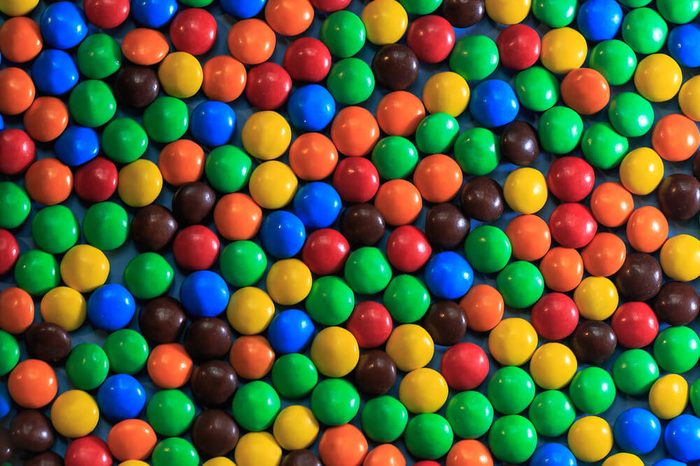
Coated candies
“One of the most popular snacks at the movie theaters, coated candy claims to be made with ‘real chocolate, but this ‘real chocolate’ contains artificial flavours, corn syrup, red 40, blue 2, yellow 5, and yellow 6,” notes Varbanova. “These dyes have been found to be contaminated with carcinogens, such as benzidine. Food colourings have been linked to several health issues, including allergies and hyperactivity in children.” Craving something sweet? Try our Healthy Oatmeal Cookie.
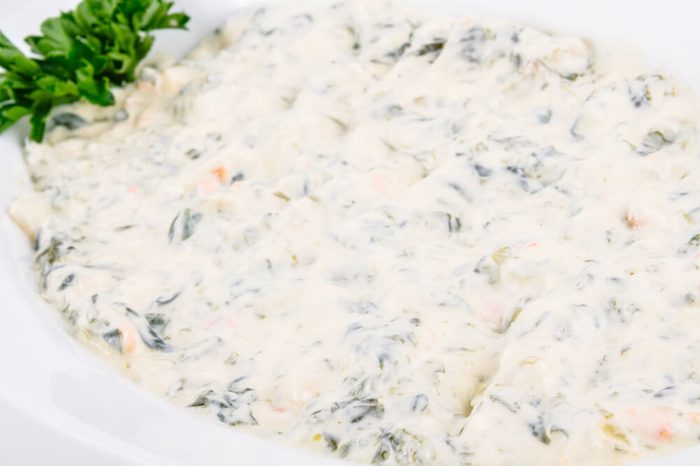
Creamy spinach dip
Don’t be fooled by “spinach!” in this product’s name. Varbanova points out that the ingredients in commercially prepared creamy spinach diglutamate has been linked to headaches, obesity, depression, and mental disorders.
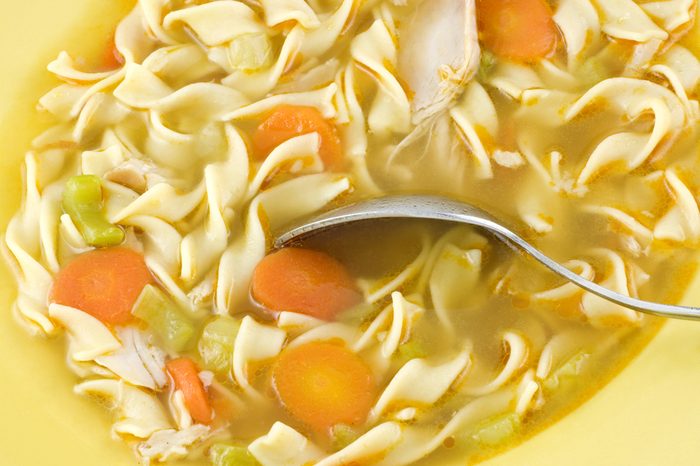
Canned chicken noodle soup
“Once again the label on certain soups can easily lead you to believe it’s a nutritious food with 16g of protein,” says Varbanova. “Once you look on the back, however, you’ll see that this soup is full of junk. Some of the ingredients here are modified food starch, carrageenan, sugar, canola oil, disodium inosinate, and disodium guanylate.” Carrageenan has been linked to digestive problems and inflammation, she notes. Also, canola oil is a refined cooking oil that goes through a heavy amount of processing with chemical solvents, neutralizers, bleach, and deodorizers before it ends up in the bottle. Instead, try our super healthy paleo chicken soup.
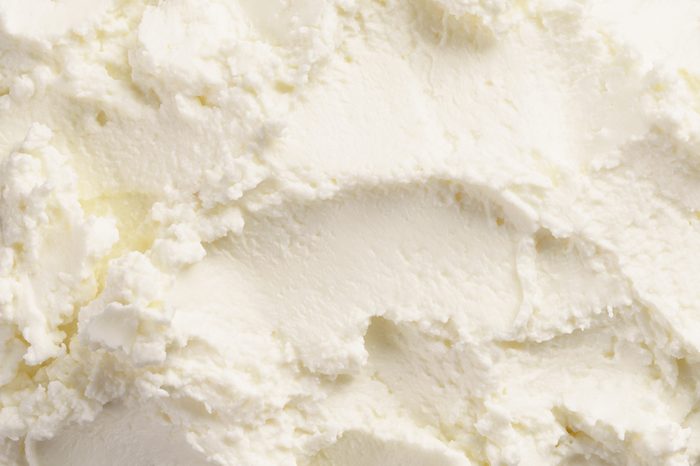
Certain cream cheese
Not only does one serving of one of the most popular cream cheese brands have 6g of saturated fat (over a quarter of your recommended daily intake), but it’s made with a number of less-than-clean ingredients, and in fact, “cheese culture” is the last ingredient listed. (Psst: Check out these lower-calorie cheese options.)
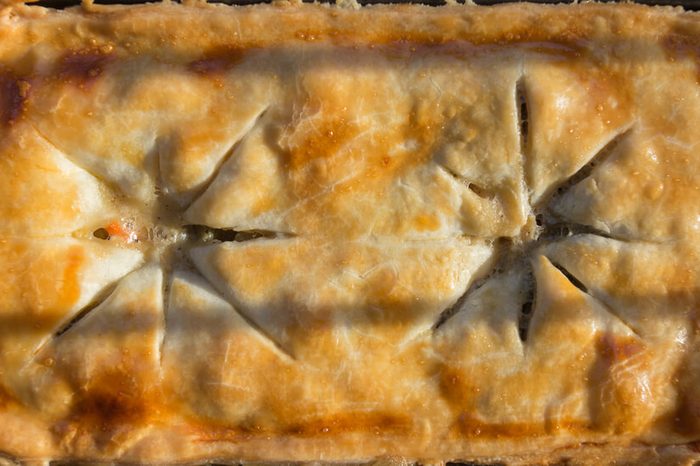
Frozen pot pie
It seems like a pretty healthy dinner, but the packaging will trick you. “Popular brands often contain two portions, not one, but you’ll probably eat the entire thing,” says Elizabeth M. Ward, MS, RD. “It’s rich in saturated fat and has far too many calories for most people, as well as excessive levels of sodium and saturated fat.”
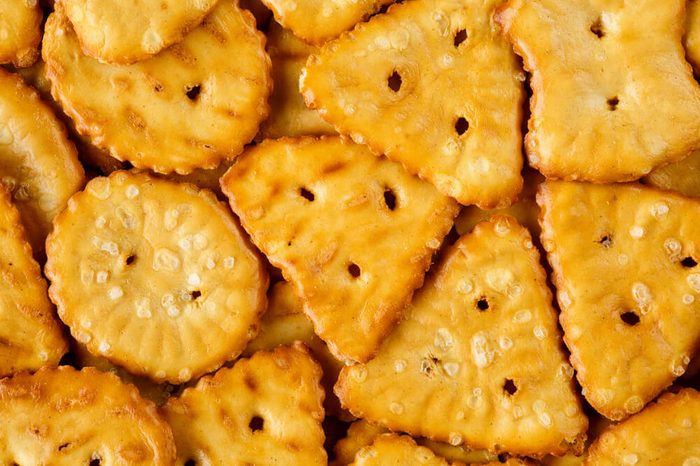
Pretzel sandwiches
“Cheesy pretzel sandwiches are packed with refined carbohydrate and sodium and just a few vitamins and minerals,” notes Ward. “They lack substantially in protein, which may leave you feeling like you need more food soon after eating them.” Instead, she suggests opting for walnuts. “Ounce per ounce, pretzel sandwiches and walnuts have about the same calories, but walnuts supply heart-healthy fat, protein, fibre, vitamins, and minerals, and are naturally low in sodium.”
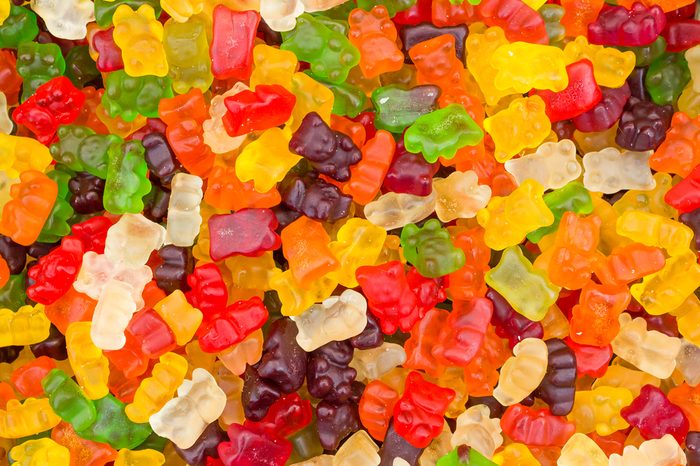
Gummy bears
“They may be fat-free, but most brands of gummy bears are full of added sugar and food colouring,” says Danielle Hamo RD, LDN. “Eating them will probably lead to increased hunger because they’re all carbs and have no fibre to prevent your blood sugar from spiking and crashing.”
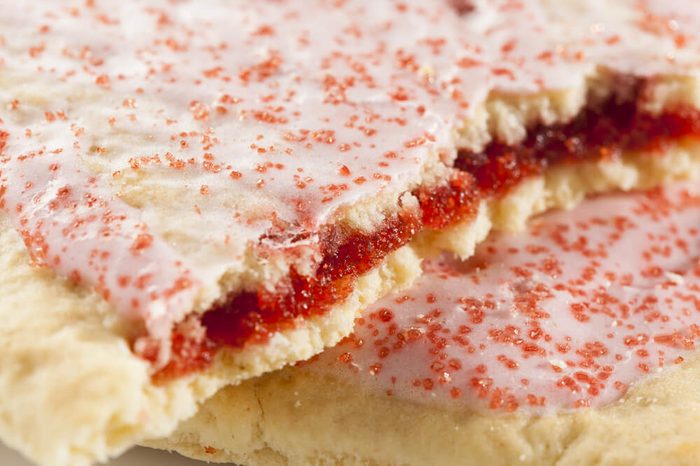
Toaster snacks
“These popular kid treats are only 200 calories, but that doesn’t mean they’re good for you,” says Hamo. “There’s no protein, and they’re mostly made up of sugar and fat. They’re also full of food colouring, palm oil, and high fructose corn syrup—all things you want to avoid. There’s no real fruit here, and all the carbs come from added sugars and refined flour.”
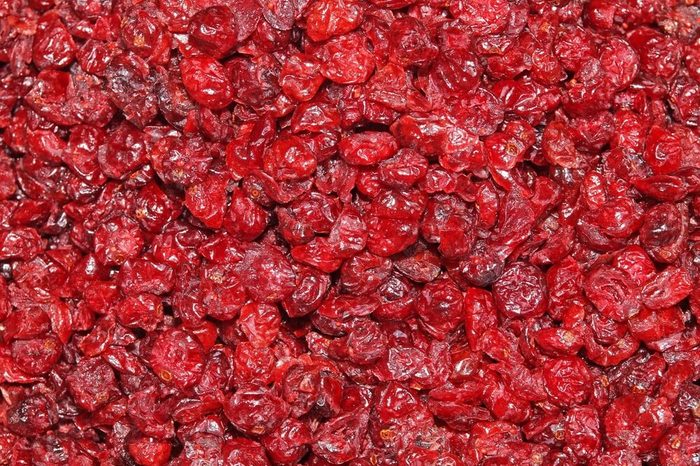
Dried cranberries
The problem with dried fruit is that while it does have nutrients, it’s also loaded with calories and sugar and very easy to overeat. What’s worse, many packaged dried fruits have added sugar—out of the 40g of carbs in one serving, 29 are sugar! Fresh fruit will always be the best choice, but if you must have the dried kind, opt for the no-sugar-added kind.
(Related: 11 Fruits and Veggies to Buy Frozen)
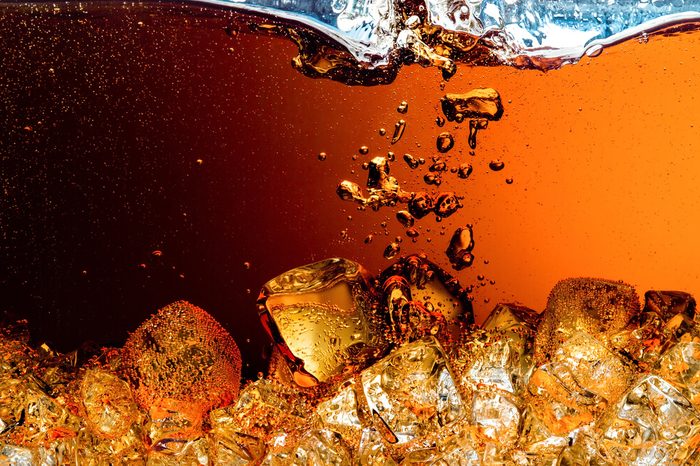
Bottled peach tea
Saying that any bottled tea is made from the best stuff on earth is the opposite of truth in advertising. One bottle a popular brand has 160 calories and 39g of sugar—that’s about 10 teaspoons! It also has 40g of carbs, which is 13 percent of your daily value. Instead, make your own iced tea. Brands like Kusmi have specifically formulated 0 calorie, 0 sugar iced varieties.
(Related: 23 Flavoured Water Recipes That Are Beyond Refreshing)
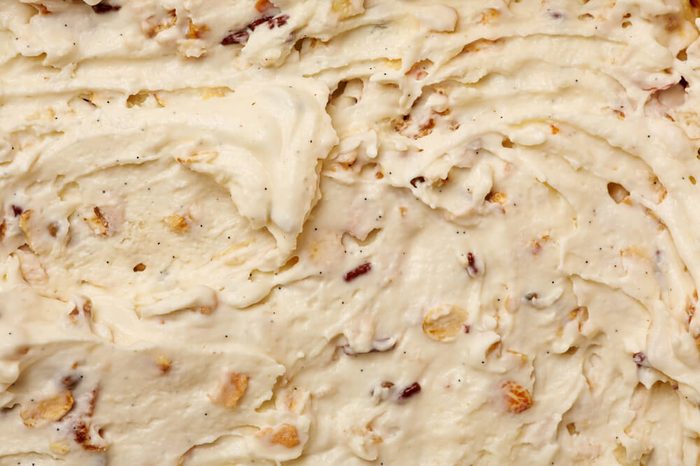
Butter pecan ice cream
You already know that ice cream isn’t great for your diet, but some brands of butter pecan are about as bad as it gets. One fan-favorite racks up a whopping 290 calories, 50 percent saturated fat, and 17g of sugar per serving, and you know no one eats just one serving. Check out our favourite “healthy” pints of ice cream.
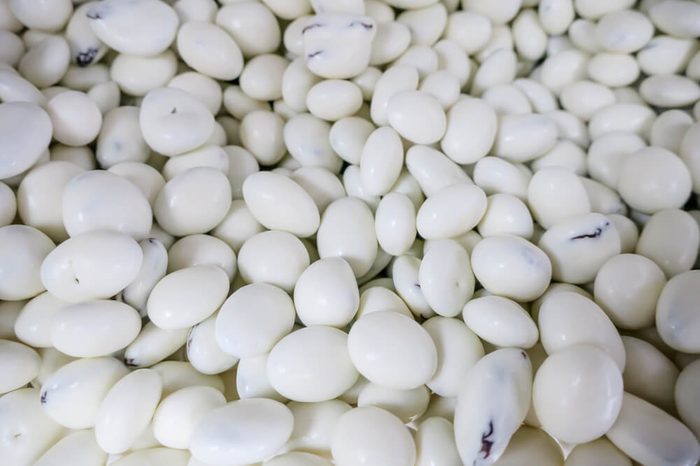
Yogurt-covered raisins
Don’t be fooled by “raisins” or “yogurt.” This snack is full of sugar (19g out of a 30g serving), and low in protein and fibre. They’re also very high in saturated fat and net carbs. Worse yet, if you think you’re getting calcium, think again. One serving has just 2 percent calcium, and other ingredients are partially hydrogenated palm kernel oil and titanium dioxide (yes, the same thing you find in sunscreen and makeup).
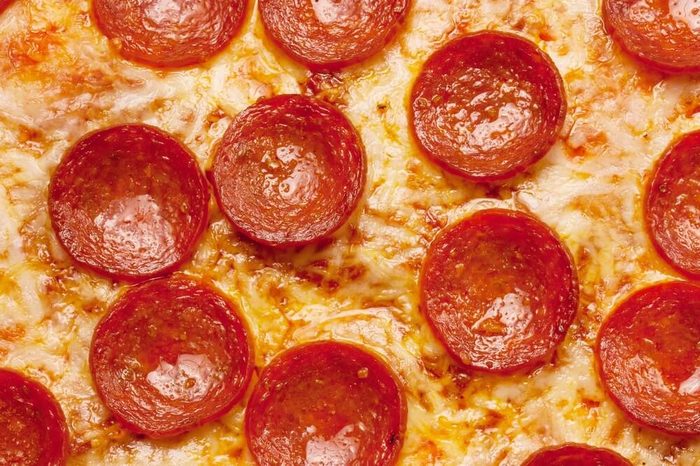
Frozen pizza
Not only are many frozen pizzas full of chemicals and preservatives, but they’re also very high in calories, fat, sodium, and carbs—even relatively high in sugar. For a more nutritious alternative, jump on the cauliflower pizza crust trend.
(Related: The Healthiest Cauliflower Pizza Crust You’ll Ever Make)
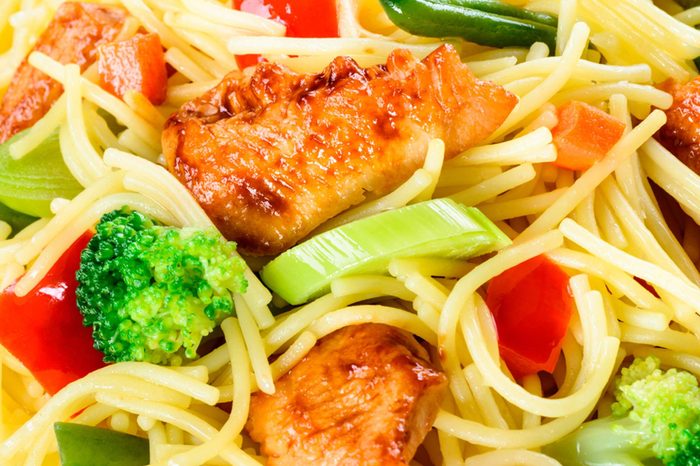
Light frozen entrees
There’s nothing lean about many popular frozen entrees advertised as such. Some have so much salt that you’ll be bloated for hours, if not longer. One leading brand also has a whopping 15g of sugar and is very high in carbs while being low in satiating fibre.
Next: This Nutrition Expert Is Encouraging You to Eat the Cookie
